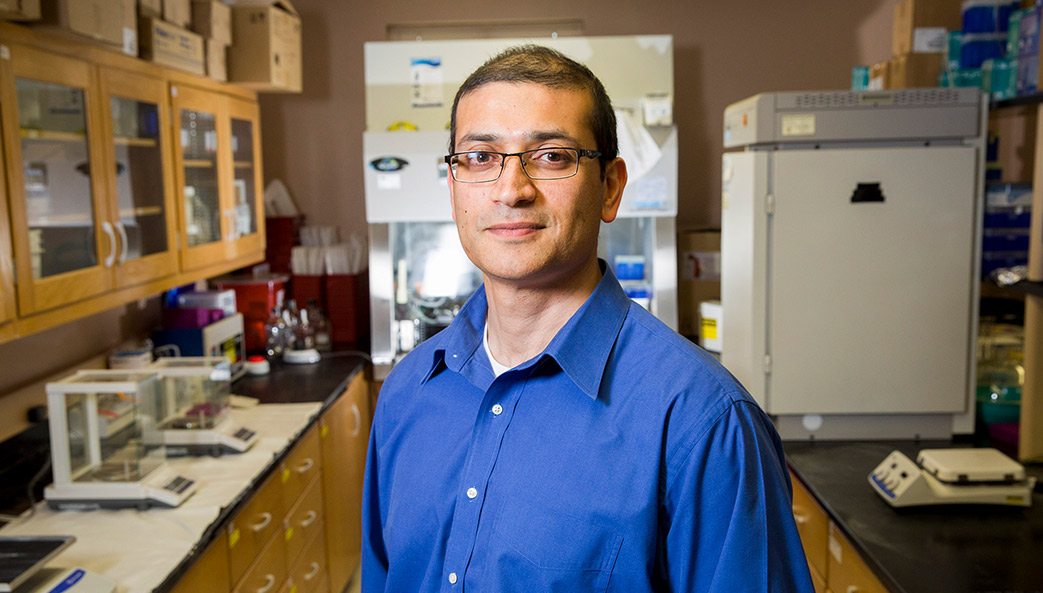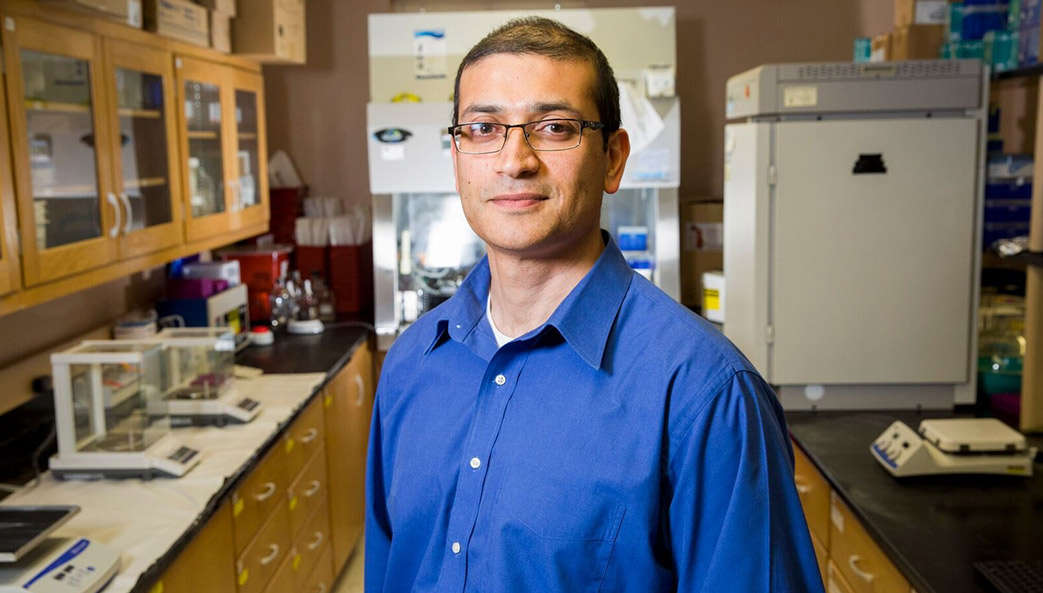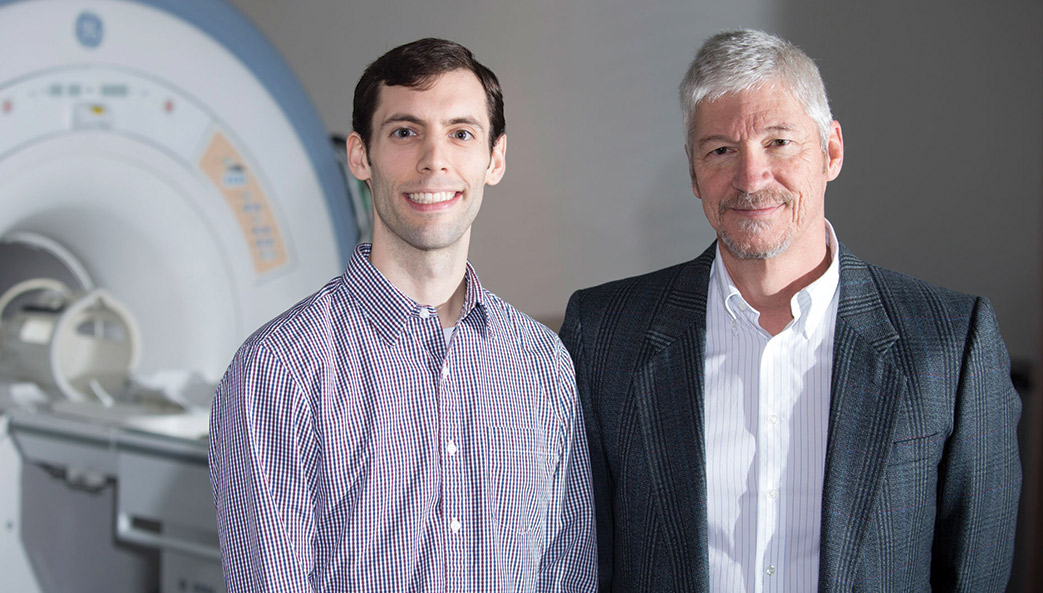A material developed by researchers at UGA’s Regenerative Bioscience Center could one day serve as a treatment for traumatic brain injuries.
The hydrogel matrix—called Brain Glue—has a gelatin-like consistency that acts as a scaffolding for transplanted stem cells, which are capable of repairing damaged tissue. It can take the shape of the void left in the brain after a severe trauma, providing a more natural healing environment for stem cells to colonize and regenerate.
Unlike other synthetic hydrogels, Brain Glue offers a variety of possibilities to trap neural stem cells, improve integration and reduce the likelihood of rejection, according to the research team led by Lohitash Karumbaiah, assistant professor in the College of Agricultural and Environmental Sciences.
“It’s very common with these invasive injuries that surgeons will actually remove the dead part of the brain, leaving behind a cavity or hole,” he said.
“The cool thing about this chemistry is that you can take our Brain Glue liquid formulation and then very briefly expose it to long-wave UV light and form a hydrogel in any shape you like.”
The new approach is described in the journal ACS Biomaterials Science and Engineering.
This brief appeared in the fall 2017 issue of Research Magazine. The original press release is available at https://news.uga.edu/releases/article/brain-glue/.






